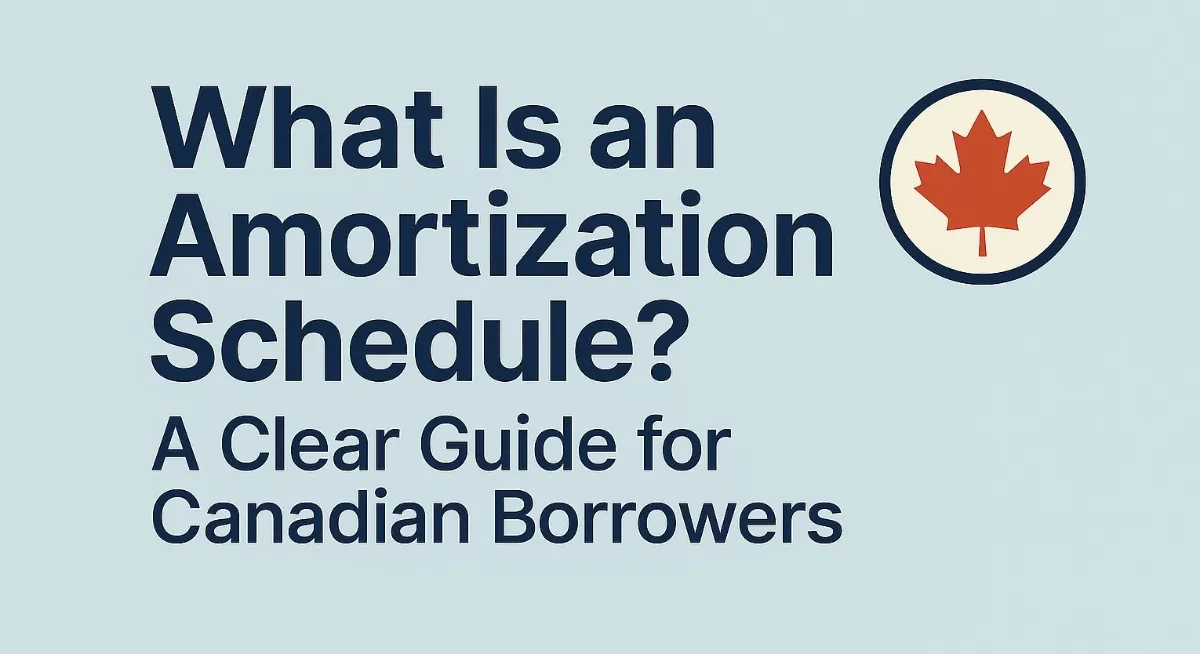
What Is An Amortization Schedule?
Last Updated on May 8, 2025
When you take out a mortgage or loan in Canada, understanding how your repayments work is key to managing your finances. That’s where an amortization schedule comes in. This guide explains everything you need to know — in simple terms - so you can take control of your debt repayment strategy.
Amortization Schedule - Simple Definition
An amortization schedule is a table that shows how each of your loan payments is divided between interest and principal over time. It also tracks how much you still owe after each payment.
Put simply, it’s the blueprint for how your loan will be paid off — one payment at a time.
Why Amortization Matters in Canada
In Canada, mortgages are typically amortized over 25 to 30 years, though shorter periods are available. The longer the amortization period, the lower your monthly payment — but the more you’ll pay in interest over time.
Canadian borrowers should understand amortization because it affects:
- How much interest you pay over the life of the loan
- How quickly you build equity in your home
- Your eligibility for mortgage refinancing or renewal
For insured mortgages (through CMHC or other providers), the maximum amortization is typically 25 years.
How an Amortization Schedule Works
Each loan payment is split between:
- Interest — the cost of borrowing
- Principal — the actual amount you borrowed
Early in the schedule, most of your payment goes toward interest. Over time, more goes toward principal. This is because interest is calculated on the remaining balance, which shrinks with each payment.
Common Elements in an Amortization Schedule:
- Payment number (e.g., Month 1, Month 2…)
- Total payment amount
- Interest portion
- Principal portion
- Remaining loan balance
Amortization Schedule Example (5 Payments)
| Payment # | Payment | Interest | Principal | Balance Remaining |
|---|---|---|---|---|
| 1 | $1,500 | $1,000 | $500 | $249,500 |
| 2 | $1,500 | $998 | $502 | $248,998 |
| 3 | $1,500 | $996 | $504 | $248,494 |
| 4 | $1,500 | $994 | $506 | $247,988 |
| 5 | $1,500 | $992 | $508 | $247,480 |
Note: This example is simplified and assumes a fixed interest rate.
Mortgage Amortization vs. Loan Term
Your loan term (e.g., 5 years) is how long you’re locked into a specific interest rate or lender. The amortization period is the total time it will take to pay off the loan in full (often 25–30 years).
At the end of each term, you can renew, refinance, or repay the loan — but the amortization schedule continues unless you make changes.
Tools to View or Create an Amortization Schedule
Here are some ways to create or access your amortization schedule:
Online Calculators (Canada-specific):
Microsoft Excel:
- Use functions like PMT, IPMT, and PPMT to build a schedule.
- Or download ready-made templates.
Final Thoughts
An amortization schedule isn’t just a table - it’s a tool. Understanding how your mortgage or loan gets repaid can help you make smarter financial decisions, pay off debt faster, and save on interest. Download it for free from NOW.
Download the Free Amortization Schedule Template
Ready to apply what you've learned? Get instant access to the Amortization Schedule PDF - free, editable, and built for Canadian businesses. No sign-up required.
Frequently Asked Questions
Answers to common questions about What Is An Amortization Schedule?.
Can I change my amortization schedule?
Yes, through refinancing, lump-sum payments, or renegotiation. Many lenders allow prepayment privileges.
What happens if I pay more each month?
Extra payments go toward the principal, reducing your interest cost and shortening your amortization period.
Do biweekly payments reduce amortization?
Yes. Switching from monthly to accelerated biweekly payments can save thousands in interest and cut years off your mortgage.
Explore More in Finance Agreements
Discover curated templates in Finance Agreements to help your business stay compliant and efficient.